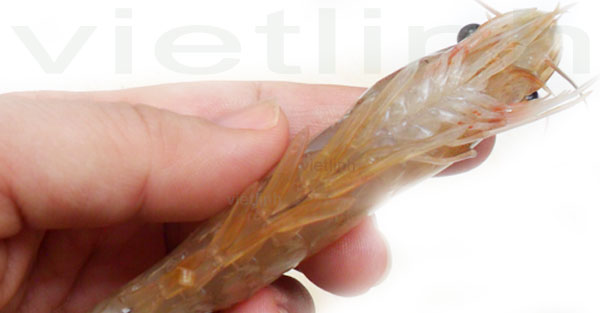2.5.10. Acute hepatopancreatic Necrosis Syndrome (AHPNS), also known as Early Mortality Syndrome (EMS)
- Stage of infection:
During the farming process, in the periodof 10-45 days after stocking.
- Clinical signs:
+ In the first phase, symptoms of the disease are unclear.
+ Shrimp grows slowly, is lethargic, stops eating, gathers around pond edges and dies at the bottom of the pond.
+ In the next phase, shrimp has soft shell, limp, swollen or shrunken hepatopancreas, and changing body color.
- Lesions:
+ Acute hepatopancreatic degeneration progresses.
+ There is the lack of mitotic activities in cells derived from embryonic tissue (E: Embyonalzellen).
+ Central cells of the hepatopancreatic system (B: Basenzellen, F: Fibrillenzellen, R: Restzellen) have modified structure and dysfunction.
+ Cells of the the hepatopancreatic system have abnormal large nucleus; there are sloughing tubule epithelial cells and mild inflammations.
+ The final stage of the syndrom has the aggregation of blood cells in the pancreas and liver duct; there are secondary infections.
- Preventions:
+ Comply with planned farming calendar and pick high-quality fingerlings to stock.
+ Process the ponds (liming, harrowing thoroughly, soaking to decompose Cypermrthrin, Deltamethrin in sludge); comply to farming process according to the guidance of farming management agencies (using only bioproducts and appropriate feed with quality assurance and without excessive feed).
+ Do not use toxic chemicals to kill trash fish, banned chemicals, or those derived from plant protection products to treat pond environment.
Source: Temporary process for safe brackish-water shrimp farming in areas affected by diseases in Vietnam. According to The Official Dispatch No. 10/TCTS-NTTS. January 6th, 2015. Vietnamese Directorate of Fisheries
Viet Linh 2015. Translated by Sonia Linh V.
